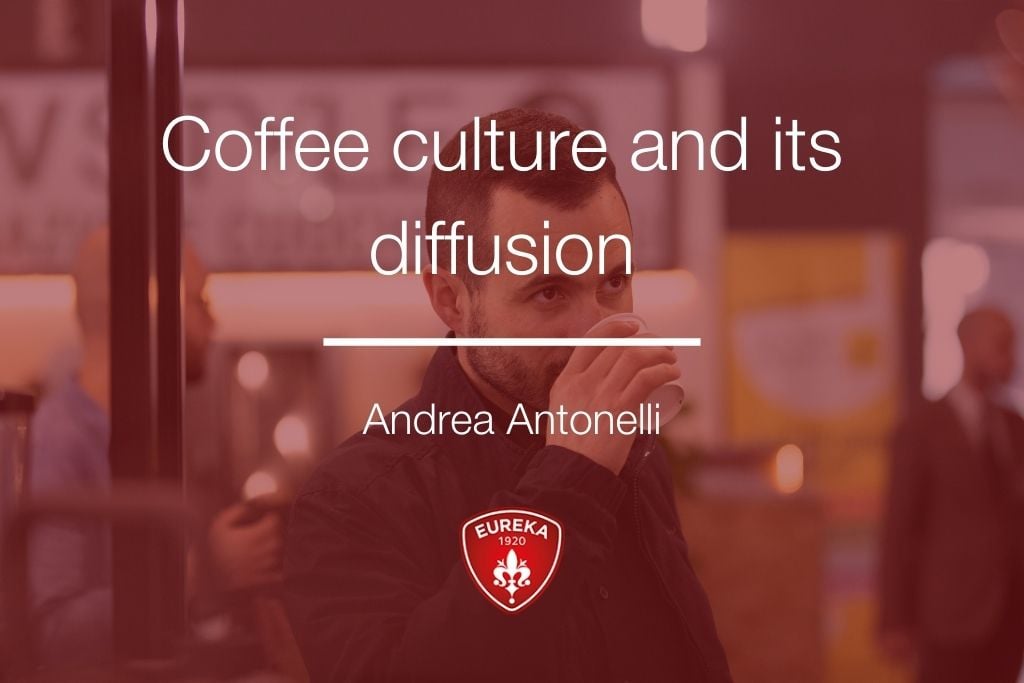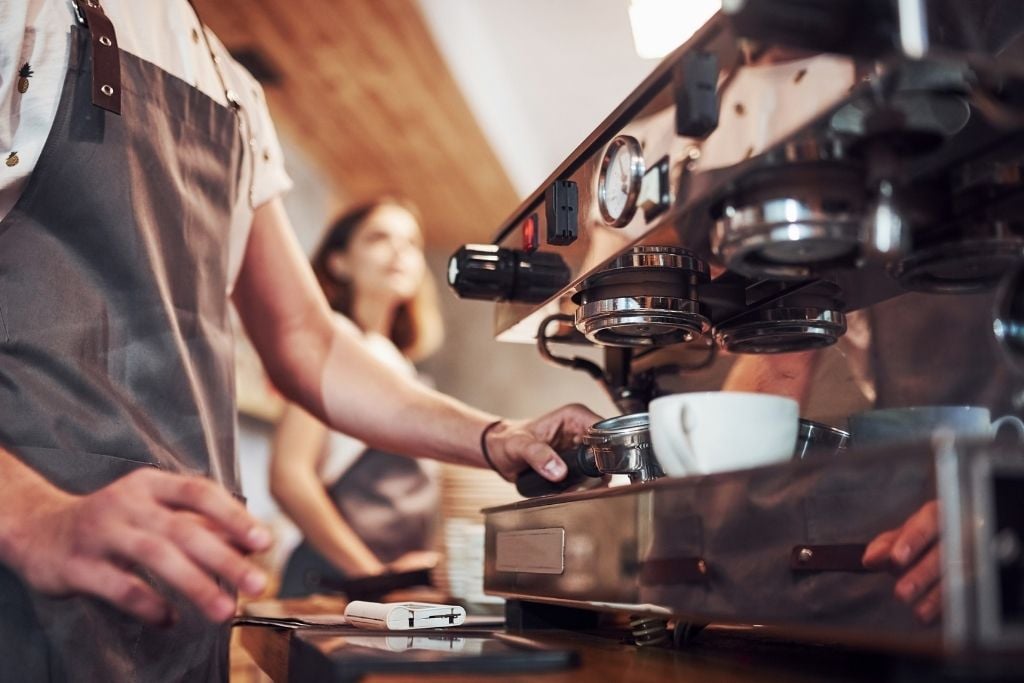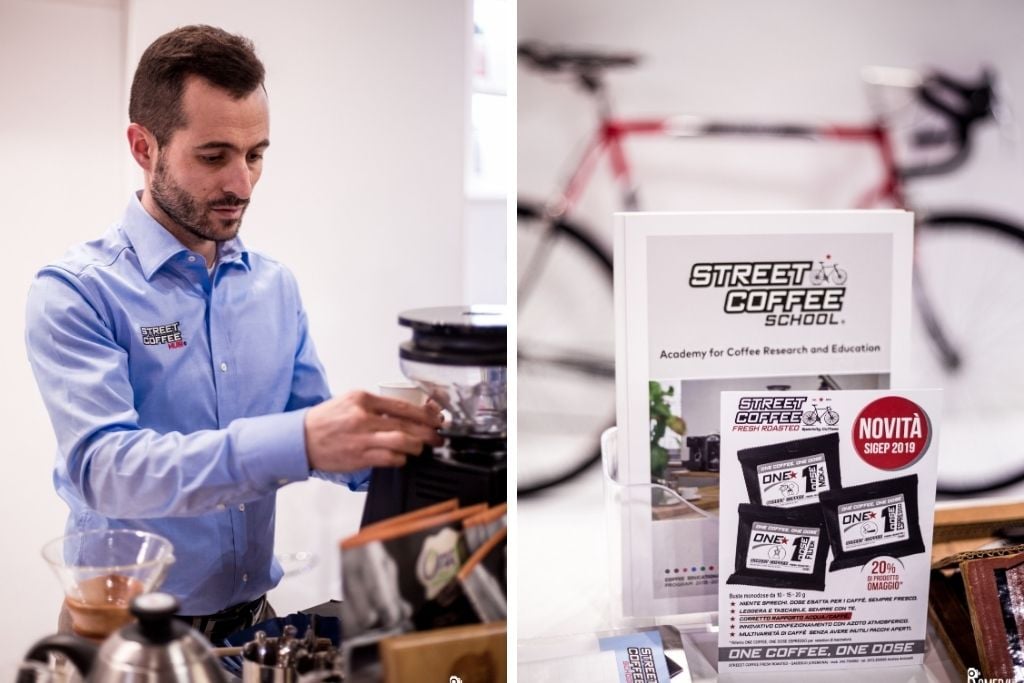Eureka Blog
Getting back to the grind with Andrea Antonelli for a coffee culture that is finally accessible to all

A special focus on coffee grind, a less frenetic approach and the spread of coffee culture will be the new musts for baristas faced with the momentous challenge of reopening post-pandemic, “transforming the coffee ritual into a taste experience”. Here, we discuss it with Andrea Antonelli, leading coffee specialist and creative genius.
Antonelli trained in Italian Barista schools and has worked in both Italy and abroad since 1999. Thanks to numerous training courses and his own natural talent, he won the Italian Barista Championship Cafeteria award in 2006, then going on to continue his education and cement his position as champion of the SCAE Italian Latte Art Championships for four consecutive years (2008 to 2011). He is currently CEO of the Street Coffee School and in charge of puly CAFF training.
Andrea, tell us, where have you tasted the best coffee ever? And where is the industry heading today?
There’s been a lot of limelight on coffee transformation in Northern Europe, Asia and Australia, for example, where per capita consumption happens to be much higher than ours. Let me explain it this way: since the final product is more expensive in Northern Europe, greater attention is paid throughout the supply chain—and to brewed coffee in particular, which calls for raw materials of the highest quality.
What is the perfect coffee for you?
“Natural Ethiopian” is my origin of choice, in both espresso and brewed form, due to the great complexity of the bean and its unique traits. I love coffees that have been naturally processed, where the fruit (drupe) is harvested the same day and put to dry in the sun. I generally go for sweet coffees with hints of red fruits.
The role of the barista in the new start
The experience of a good coffee also depends on the professionalism of the barista who prepares it, and on the machines used and their regular maintenance, just like oiling a musical instrument before an important concert. This is all part of the coffee culture: it starts behind the counter and it is pivotal for the new start of such an important professional category.
What is the role of the barista of the future?
Today as in the near future, the barista needs to be able to spread the coffee culture. To make a difference, the barista will try to keep informed about the coffee he/she is using, extracting it with the best machine, and constantly cleaning the machine and caring for all the aspects that make it possible to offer a top-quality coffee. In general, the barista has studied and knows how to recognise what he/she is working with. Consumers need to realise that the quality we are offering deserves a fair price.

What are the key elements to start a journey through quality?
Most definitely grinding, when the bean is processed, the starting point for coffee, together with the quality of the water used. If perfectly calibrated, these two elements alone can make a difference. On a technical level, I believe the real work of the barista is to clean the coffee grinder and the coffee machine.
Since it all starts with grinding, how do you choose the ideal coffee grinder?
I always start by remembering that not all coffee is the same. Some are more “fragile”, some are “stronger”, roasted differently, etc.; there are beans of different sizes, for espresso, for the coffee machine and the filter. There is no one-size-fits-all coffee grinder. My advice is to focus on the core of your business and try to have different types of coffee grinders.
A quality grinder minimises heating during processing; it only grinds on demand, when you need it, with minimum waste. Even at maximum speed, the grinder shouldn’t produce waste and should be as quiet as possible. Otherwise, it would be as if a chef doesn’t have the right knives or pots to prepare all the dishes. Unfortunately, most Italian coffee shops still don’t use “on demand” grinders. We risk ruining a precious and very expensive raw material.
Critical aspects of Italian coffee shops
If we go beyond the reality of a single coffee shop and look more broadly at Italian coffee shops as a whole, we can highlight some critical aspects of the system, partly responsible for the lack of an ever more needed coffee culture. At the end of our talk with Andrea we spoke of the average price of Italian espresso, and the post-COVID situation in coffee shops.
Andrea, can you draw a picture of the coffee industry in Italy? What are the advantages and disadvantages?
We should start by looking at the pre-COVID period, because from now on the world of coffee will undergo major changes. Italy is both ahead and behind when it comes to coffee. Let me explain what I mean. Currently, most consumers are not well-informed about the quality of the coffee they drink, with very few exceptions of rare examples who represent the coffee culture in our country. This is also seen in the average price for a cup of coffee in Italy, incredibly low compared to the rest of the world. We don’t seem to consider the quality of what we are offering and the real costs of production at all levels of the entire supply chain.

How much should a coffee cost, and why?
The coffee shop industry works in a context that fails to reward quality. Just think that in the last 15 years the price of a cup of coffee hasn’t changed much, remaining at about EUR 1/per coffee, but in the meantime raw materials and management costs have increased exponentially due to exogenous factors such as the costs of transportation, energy, rent, etc.. We can’t turn a blind eye: the market is “overly-mature” and we will inevitably have to adapt to the international reality where prices are more profitable. In Italy, we are “sentenced” to having a “fixed price” for coffee that doesn’t consider the actual costs and ends up damaging the quality and survival of the seller.
In Italy, there are about 700 medium-size roasters. Nowadays, the real strength and services of the roaster should be to thoroughly pass on to the customer all the information of the supply chain, a time-consuming, expensive but necessary process. I think that in general a cup of coffee should cost at least EUR 2. This price is calculated on the coffee extracted every day, and considers the costs of the machines and labour of the barista.
Where do you start from after months of inactivity due to the COVID crisis?
We have to start from a good espresso. Now the barista has the time to do everything. There are no more queues nor crowds in cafeterias, and there is time to clean and ensure quality with no rush. No more excuses. There is also time to explain to the customer all the characteristics of what is being offered. This approach will be more meticulous and relaxed, both for the barista and the customer. There is more time to drink coffee, the cup is even more at the centre of the whole experience, and the spotlight is finally on the much-needed quality.
